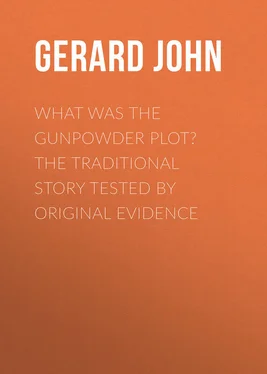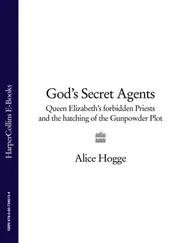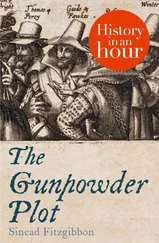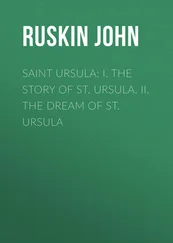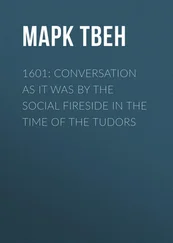John Gerard - What was the Gunpowder Plot? The Traditional Story Tested by Original Evidence
Здесь есть возможность читать онлайн «John Gerard - What was the Gunpowder Plot? The Traditional Story Tested by Original Evidence» — ознакомительный отрывок электронной книги совершенно бесплатно, а после прочтения отрывка купить полную версию. В некоторых случаях можно слушать аудио, скачать через торрент в формате fb2 и присутствует краткое содержание. Жанр: foreign_antique, foreign_prose, на английском языке. Описание произведения, (предисловие) а так же отзывы посетителей доступны на портале библиотеки ЛибКат.
- Название:What was the Gunpowder Plot? The Traditional Story Tested by Original Evidence
- Автор:
- Жанр:
- Год:неизвестен
- ISBN:нет данных
- Рейтинг книги:5 / 5. Голосов: 1
-
Избранное:Добавить в избранное
- Отзывы:
-
Ваша оценка:
- 100
- 1
- 2
- 3
- 4
- 5
What was the Gunpowder Plot? The Traditional Story Tested by Original Evidence: краткое содержание, описание и аннотация
Предлагаем к чтению аннотацию, описание, краткое содержание или предисловие (зависит от того, что написал сам автор книги «What was the Gunpowder Plot? The Traditional Story Tested by Original Evidence»). Если вы не нашли необходимую информацию о книге — напишите в комментариях, мы постараемся отыскать её.
What was the Gunpowder Plot? The Traditional Story Tested by Original Evidence — читать онлайн ознакомительный отрывок
Ниже представлен текст книги, разбитый по страницам. Система сохранения места последней прочитанной страницы, позволяет с удобством читать онлайн бесплатно книгу «What was the Gunpowder Plot? The Traditional Story Tested by Original Evidence», без необходимости каждый раз заново искать на чём Вы остановились. Поставьте закладку, и сможете в любой момент перейти на страницу, на которой закончили чтение.
Интервал:
Закладка:
On the very day upon which the first company suffered, Father Garnet, whose hiding-place was known, and who had been closely invested for nine days, was captured, in company with another Jesuit, Father Oldcorne. The latter, though never charged with knowledge of the plot, was put to death for having aided and abetted Garnet in his attempt to escape. Garnet himself, being brought to London, was lodged first in the Gatehouse and afterwards in the Tower.
As we have seen, he had already been proclaimed as a traitor, and "particular practiser" in the conspiracy, and had moreover been officially described as the head and front of the treason. Of the latter charge, after his capture, nothing was ever heard. Of his participation, proofs, it appeared, still remained to be discovered, for on the 3rd of March Cecil still spoke of them as in the future. 12 12 "That which remaineth is but this, to assure you that ere many daies you shall hear that Father Garnet … is layd open for a principall conspirator even in the particular Treason of the Powder." — To Sir Henry Bruncard, P.R.O. Ireland , vol. 218, March 3rd, 1605-6. Also (Calendar) Dom. James I. xix. 10.
In order to obtain the required evidence of his complicity, Garnet was examined three-and-twenty times before the council, and, in addition, various artifices were practised which need not now be detailed. On the 28th of March, 1606, he was brought to trial, and on May 3rd he was hanged at St. Paul's. The Gunpowder Conspirators were thenceforth described in government publications as "Garnet, a Jesuit, and his confederates."
Such is, in outline, the course of events which followed the discovery of November 5th, all circumstances being here omitted which are by possibility open to dispute.
It will probably be maintained, as our best and most circumspect historians appear to have assumed, that we are in possession of information enabling us to construct a similar sketch of what preceded and led up to these events, – whatever obscurity there may be regarding the complicity of those whose participation would invest the plot with the significance which has been attributed to it. If it were indeed but the individual design of a small knot of men, acting for themselves and of themselves, then, though they were all Catholics, and were actuated by a desire to aid the Catholic cause, the crime they intended could not justly be charged upon the body of their co-religionists. It would be quite otherwise if Catholics in general were shown to have countenanced it, or even if such representative men as members of the priesthood were found to have approved so abominable a project, or even to have consented to it, or knowingly kept silence regarding it. Of the complicity of Catholics in general or of their priesthood as a body there is no proof whatever, nor has it ever been seriously attempted to establish such a charge. As to the three Jesuits already named, who alone have been seriously accused, there is no proof, the sufficiency of which may not be questioned. But as to the fact that they who originated the Plot were Catholics, that they acted simply with the object of benefiting their Church, and that the nation most narrowly escaped an appalling disaster at their hands, can there be any reasonable doubt? Is not the account of their proceedings, to be read in any work on the subject, as absolutely certain as anything in our history?
This account is as follows. About a year after the accession of James I., 13 13 In Lent, 1603-4. Easter fell that year on April 8th.
when it began to be evident that the hopes of toleration at his hands, which the Catholics had entertained, were to be disappointed, Robert Catesby, a man of strong character, and with an extraordinary power of influencing others, bethought him in his wrath of this means whereby to take summary vengeance at once upon the monarch and the legislators, under whose cruelty he himself and his fellows were groaning. The plan was proposed to John Wright and Thomas Winter, who approved it. Faukes was brought over from the Low Countries, as a man likely to be of much service in such an enterprise. Shortly afterwards Percy joined them, 14 14 "About the middle of Easter Term." — Thomas Winter's declaration , of November 23rd, 1605.
and somewhat later Keyes and Christopher Wright were added to their number. 15 15 "Keyes, about a month before Michaelmas." — Ibid. About Christopher Wright there is much confusion, Faukes (November 17th, 1605) implying that he was introduced before Christmas, and Thomas Winter (November 23rd, 1605) that it was about a fortnight after the following Candlemas, i. e. , about the middle of February.
All the associates were required to take an oath of secrecy, 16 16 The form of this oath is thus given in the official account: "You shall swear by the blessed Trinity, and by the Sacrament you now propose to receive, never to disclose directly or indirectly, by word or circumstance, the matter that shall be proposed to you to keep secret, nor desist from the execution thereof until the rest shall give you leave." It is a singular circumstance that the form of this oath, which was repeated in official publications, with an emphasis itself inexplicable, occurs in only one of the conspirators' confessions, viz., the oft-quoted declaration of T. Winter, November 23rd, 1605. This – as we shall see, a most suspicious document – was one of the two selected for publication, on which the traditional history of the plot depends. Curiously enough, however, the oath, with sundry other matters, was omitted from the published version of the confession. [Published in the "King's Book: " copy, or draft, for publication, in the Record Office: original at Hatfield. Copy of original Brit. Mus. Add. MSS., 6178, 75.]
and to confirm it by receiving Holy Communion. 17 17 T. Winter says: "Having upon a primer given each other the oath of secrecy, in a chamber where no other body was, we went after into the next room and heard mass, and received the blessed Sacrament upon the same." — Declaration , November 23rd, 1605.
These are the seven "gentlemen of blood and name," as Faukes describes them, who had the main hand in the operations which we have to study. At a later period six others were associated with them, Robert Winter, elder brother of Thomas, and Grant, both gentlemen of property, Bates, Catesby's servant, and finally, Rokewood, Digby, and Tresham, all rich men, who were brought in chiefly for the sake of their wealth, and were enlisted when the preparations for the intended explosion had all been completed, in view of the rising which was to follow. 18 18 Digby was enlisted "about Michaelmas, 1605;" Rokewood about a month before the 5th of November. Tresham gives October 14th as the date of his own initiation. Examination , November 13th, 1605.
Commencing operations about the middle of December, 1604, these confederates first endeavoured to dig a mine under the House of Lords, and afterwards hired a large room, described as a cellar, situated beneath the Peers' Chamber, and in this stored a quantity of gunpowder, which Faukes was to fire by a train, while the King, Lords, and Commons, were assembled above.
Their enemies being thus destroyed, they did not contemplate a revolution, but were resolved to get possession of one of the king's sons, or, failing that, of one of his daughters, whom they would proclaim as sovereign, constituting themselves the guardians of the new monarch. They also contrived a "hunting match" on Dunsmoor heath, near Rugby, which was to be in progress when the news of the catastrophe in London should arrive; the sportsmen assembled for which would furnish, it was hoped, the nucleus of an army.
Meanwhile, as we are assured – and this is the crucial point of the whole story – the government of James I. had no suspicion of what was going on, and, lulled in false security, were on the verge of destruction, when a lucky circumstance intervened. On October 26th, ten days before the meeting of Parliament, a Catholic peer, Lord Monteagle, received an anonymous letter, couched in vague and incoherent language, warning him to absent himself from the opening ceremony. This document Monteagle at once took to the king's prime minister, Robert Cecil, Earl of Salisbury, who promptly divined its meaning and the precise danger indicated, although he allowed King James to fancy that he was himself the first to interpret it, when it was shown to him five days later. 19 19 This is clear from a comparison of Cecil's private letter to Cornwallis and others (Winwood, Memorials , ii. 170), with the official account published in the Discourse of the manner of the Discovery of the Gunpowder Plot .
Not for four other days were active steps taken, that is, till the early morning of the fatal Fifth. Then took place the discovery of which we have already heard.
Интервал:
Закладка:
Похожие книги на «What was the Gunpowder Plot? The Traditional Story Tested by Original Evidence»
Представляем Вашему вниманию похожие книги на «What was the Gunpowder Plot? The Traditional Story Tested by Original Evidence» списком для выбора. Мы отобрали схожую по названию и смыслу литературу в надежде предоставить читателям больше вариантов отыскать новые, интересные, ещё непрочитанные произведения.
Обсуждение, отзывы о книге «What was the Gunpowder Plot? The Traditional Story Tested by Original Evidence» и просто собственные мнения читателей. Оставьте ваши комментарии, напишите, что Вы думаете о произведении, его смысле или главных героях. Укажите что конкретно понравилось, а что нет, и почему Вы так считаете.
